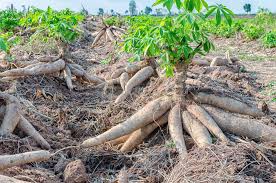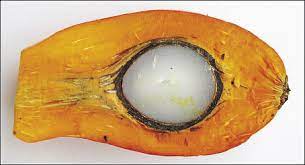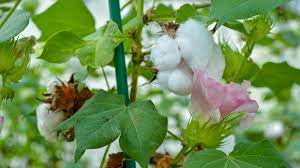Cassava Tuberous Roots: Economic Importance, Uses and By-Products
Cassava tuberous roots typically have a tapered, elongated shape, similar to a large sweet potato. However, their size can vary significantly, ranging from about 15 centimeters (6 inches) to over 30 centimeters (12 inches) in length. The thickness of the roots also varies. The color of cassava roots varies depending on the variety and maturity. Younger roots tend to have a lighter, cream-colored flesh, while older roots can be more yellowish. The skin is usually brown or rough, often covered in soil.
Cassava roots have a dense, firm, and slightly fibrous texture when raw. The flesh is relatively dry compared to other starchy root vegetables, such as potatoes. Cassava roots have a mild, neutral flavor when raw, with a hint of nuttiness. The taste is somewhat similar to a potato but with a subtler taste profile.
Cassava is prized for its high starch content, making it an important source of carbohydrates in many diets. The starch is primarily composed of amylopectin, which gives cassava a smooth, creamy texture when cooked. Cassava roots need to be peeled before consumption. The skin contains compounds that can be toxic if consumed in large quantities, so proper preparation is essential. After peeling, cassava can be boiled, fried, roasted, or processed into various products like cassava flour or tapioca pearls.
Cassava tuberous roots are a significant source of carbohydrates and are valued for their adaptability, versatility, and importance in the diets of many communities around the world. Proper preparation and cooking are essential due to the presence of potentially harmful compounds in the skin and raw flesh.
The Economic Importance and Uses of Cassava Tuberous Roots

Cassava (Manihot esculenta) is a versatile tropical crop known for its starchy tuberous roots. It is a staple food for millions of people around the world and has numerous economic and practical uses.
Here are some of the economic importance and uses of cassava tuberous roots:
1. Food Security: Cassava provides a crucial source of dietary carbohydrates for millions of people, especially in Africa, Asia, and South America. It serves as a primary staple food, helping to ensure food security for many communities.
2. Income Generation: Cassava cultivation can be a significant source of income for farmers. They can sell cassava tubers in local markets or process them into various products for sale.
3. Processed Foods: Cassava is used to make a wide range of processed foods, including cassava flour, tapioca pearls, cassava chips, and cassava starch. These products have diverse culinary applications and can be sold commercially.
4. Gluten-Free Alternative: Cassava flour, often used as a wheat flour substitute, is naturally gluten-free, making it an essential ingredient for individuals with gluten intolerance or celiac disease. This opens up market opportunities in the gluten-free food industry.
5. Beverages: Cassava can be used to produce alcoholic beverages like cassava beer or non-alcoholic beverages like cassava juice. These products can be sold locally or regionally
6. Animal Feed: Cassava tubers can be used as an ingredient in animal feed, particularly for livestock such as pigs and poultry. This helps improve the productivity of the livestock industry.
7. Industrial Uses: Cassava starch is used in various industrial applications, such as in the production of adhesives, textiles, paper, and pharmaceuticals. It is also used in the textile industry for sizing and finishing fabrics.
Read Also : Cassava Stigma: Economic Importance, Uses and By-Products
8. Biofuel Production: can be processed into bioethanol, a renewable fuel source. This has economic implications, especially as the demand for alternative energy sources increases.
9. Diversification of Agricultural Income: Farmers can grow cassava alongside other crops, promoting crop diversification and reducing the risks associated with crop failures. This can enhance overall farm income and resilience.
10. Erosion Control: Cassava plants have a deep root system that helps in soil stabilization and erosion control, which can be vital in areas prone to soil erosion.
11. Export Opportunities: Cassava and its processed products can be exported to international markets, contributing to foreign exchange earnings for countries that produce cassava.
12. Rural Employment: Cassava farming and processing activities provide employment opportunities, especially in rural areas where job opportunities may be limited.
13. Food Aid and Relief: Cassava can be used as food aid during times of food scarcity or natural disasters, providing a readily available source of calories.
14. Genetic Resource: Cassava serves as a genetic resource for breeding programs aimed at developing disease-resistant and higher-yielding cassava varieties, which can further enhance food security.
15. Climate Resilience: Cassava is relatively resilient to adverse weather conditions, making it a valuable crop in regions prone to droughts or erratic rainfall.
The Products and By-products That Can Be Derived From Cassava Tuberous Roots
Cassava, also known as manioc or yuca, is a versatile crop widely cultivated in tropical and subtropical regions. It offers various products and by-products, making it an essential staple for many communities.
Here’s a list and explanation of some of the primary products and by-products that can be derived from cassava tuberous roots:
1. Cassava Flour: Cassava flour is a versatile product made by grinding dried cassava roots. It serves as a gluten-free alternative to wheat flour in various recipes and can be used for baking, cooking, and thickening sauces.
2. Cassava Starch: Cassava starch, also known as tapioca starch, is extracted from cassava roots through a process of washing, pulping, and drying. It is a common thickening agent in food production and can also be used in the textile and pharmaceutical industries.
3. Garri: Garri is a popular West African staple food made from fermented and roasted cassava granules. It is consumed as a main dish or side dish and can be eaten with various accompaniments like soup or stew.
4. Fufu: Fufu is a starchy, dough-like food made by pounding cassava roots (or other starchy vegetables) until they reach a smooth, stretchy consistency. It is a common side dish in many African and Caribbean cuisines and is often served with soups or sauces.
5. Tapioca Pearls: Tapioca pearls are small, round balls made from cassava starch. They are commonly used in bubble tea and desserts, known for their chewy texture when cooked.
6. Cassava Chips: Cassava chips are thin slices of cassava roots that are deep-fried or baked until crispy. They are a popular snack in many countries and can be seasoned with various flavors.
7. Cassava Leaves: While the focus is often on the tuberous roots, cassava leaves are also edible and can be used in cooking. They are rich in protein and can be used in soups, stews, and other dishes.
8. Livestock Feed: Cassava by-products such as cassava peels and cassava meal can be used as livestock feed, particularly for pigs, cows, and poultry, helping to reduce waste and increase the economic value of cassava cultivation.
9. Alcohol: Cassava can be used to produce alcoholic beverages such as cassava wine or cassava-based spirits. The starches in cassava can be fermented to produce alcohol through a process similar to beer or liquor production.
10. Biofuel: Cassava roots can be used to produce bioethanol, a renewable fuel source. The starches in cassava are fermented and distilled to create ethanol, which can be used as a clean energy source or as a blend with gasoline.
11. Industrial Uses: Cassava starch is used in various industrial applications, including the production of adhesives, paper, and textiles, due to its excellent adhesive and binding properties.
In conclusion, cassava tuberous roots play a crucial role in food security, income generation, and economic development in many parts of the world. Their versatility in various industries and culinary applications underscores their economic importance. Additionally, cassava can contribute to sustainability efforts, such as biofuel production and erosion control, while also serving as a vital source of income for farmers and rural communities.
Read Also: Ways to Make Money from Old Plastic Bags









